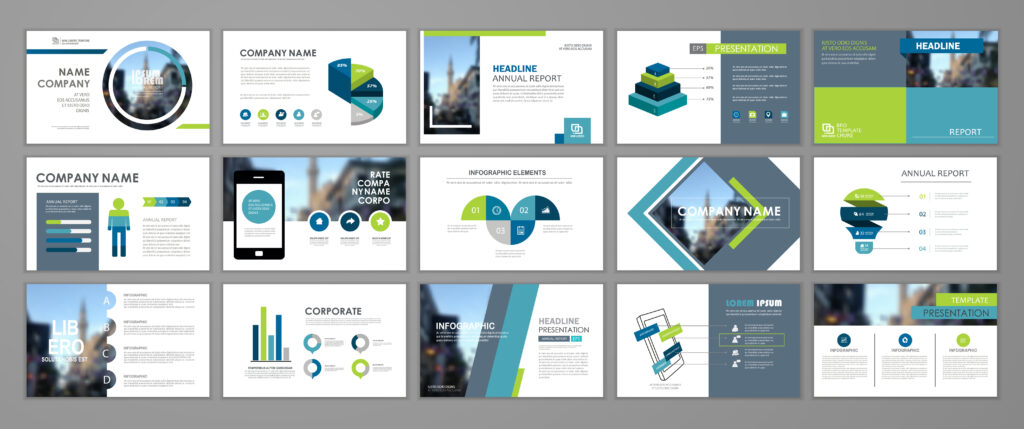“Flyers are marketing material that your customers can touch and keep. They offer a fantastic opportunity to provide value to recipients in a way that online ads don’t. If you take the time to create a beautiful and memorable flyer, there’s a better chance that customers will hang onto it.” – Seamus Barton.
Despite the growth in digital channels and ads, flyers have retained their charm and efficacy in certain contexts.
Unlike digital ads, flyers offer a tangible connection to potential customers, which can be especially impactful in local or targeted marketing campaigns.
Exploring how flyers can be strategically utilized in the 2020s, businesses might discover an underleveraged tool in their marketing arsenal.
In this article, we discuss the role and effectiveness of flyers as a marketing tool in the digital era of the 2020s.
What is the Purpose of a Flyer?
The purpose of a flier is multifaceted, serving as a versatile tool for marketing and communication. Its primary aim is to disseminate information about a product, service, event, or promotion to a wide audience.
Flyers are designed to grab attention quickly and convey key messages succinctly, prompting recipients to take desired actions, such as attending an event or visiting a store. Additionally, they can enhance brand awareness and stimulate interest in offerings among potential customers.
What is Flyer Advertising?
A flier, also known as a flier, is a paper advertisement designed for broad distribution. It’s commonly displayed in public areas, handed directly to individuals, or sent via direct mail.
In the 2020s, flyers come in many forms, ranging from simple photocopied leaflets to high-quality, glossy, full-color circulars.
How are Flyers Distributed to Consumers?
Flyers are distributed through various channels to reach their intended audience effectively. Standard distribution methods include:
- Posting them in public places like bulletin boards.
- Handing them out directly to individuals in high-traffic areas.
- Distributing them via mail.
Additionally, companies may collaborate with local businesses to display flyers at their establishments or utilize digital platforms for online distribution. The goal is to maximize visibility and engagement while targeting specific demographics or geographic areas.
Which Companies Use Flyers?
Today, many companies across different industries utilize flyers as part of their marketing strategies.
Small businesses, in particular, find flyers cost-effective and impactful for promoting their products or services within local communities.
In Addition, event organizers, nonprofit organizations, and educational institutions leverage flyers to raise awareness about upcoming events, initiatives, or causes.
Large corporations may also incorporate flyers into their marketing mix, especially for targeted campaigns or promotional activities aimed at specific markets or demographics. Examples include:
Tech Giants
Large technology corporations, such as Apple or Samsung, often utilize flyers as part of their promotional activities for new product launches.
For example, they may distribute flyers in specific geographic areas or targeted events to generate buzz and attract potential customers.
Automotive Industry
Car manufacturers like Ford or Toyota frequently employ flyers to promote special offers or discounts on new vehicle models.
These flyers may be distributed in local communities or mailed directly to existing customers to encourage repeat business.
Retail Chains
Retail chains like Walmart or Target use flyers to advertise weekly sales, promotions, or seasonal discounts.
These flyers are often distributed in local newspapers or through direct mail to target customers based on their shopping preferences and demographics.
Fast Food Chains
Large fast-food chains like McDonald’s or Subway regularly use flyers to promote new menu items, limited-time offers, or discounts.
These flyers are often distributed in-store or included in mailers sent to nearby households to drive foot traffic and increase sales.
In sum, companies use flyers for their versatility, affordability, and ability to effectively convey messages to a broad audience.
“Flyers are a hugely popular form of advertising, reaching almost 9 out of 10 people. Because they target people in the real world, not a specific medium (i.e., TV, online, radio, etc.), they are the most prevalent form of advertising.” – Shelly Parker.
How Do Flyers Perform in the 2020s?
According to Auraprint, when marketers focus solely on flyers, the typical response rate ranges from 1% to 5%. For instance, distributing 1000 leaflets would likely yield between 10 and 50 responses.
Moreover, when flyers are received, studies by the Direct Marketing Association (DMA) have found that:
- 89% of people remember receiving a flyer, making it the most memorable form of advertising. (Source: DMA)
- 79% of consumers either keep, pass on, or glance at flyers they receive, indicating their effectiveness in capturing attention. (Source: DMA)
- 45% of individuals routinely hold onto flyers for future use, as noted by the DMA, showcasing their value as a reference tool. (Source: DMA)
What are the Advantages and Disadvantages of Flyer Advertising in the 2020s?
Benefits of Flyer Advertising
-
- Flyers offer a budget-friendly marketing option, especially for small businesses or startups with limited funds.
- Flyers allow businesses to target specific demographics or local areas directly, maximizing the impact of the marketing campaign.
- Flyers are tangible and provide a physical presence that potential customers can easily notice and retain; digital ads do not.
- Flyers provide ample space to convey detailed information about products, services, or promotions, helping to capture customer interest.
- Flyers have a high recall rate, with most recipients remembering receiving them, making them practical for promoting brand awareness. (DMA)
Disadvantages of Flyer Advertising
-
- Flyers have a restricted audience reach compared to digital marketing channels, potentially limiting the campaign’s overall impact.
- If not disposed of responsibly, flyers contribute to paper waste and environmental concerns.
- In contrast to digital marketing, it can take time to accurately track the return on investment (ROI) of flyer advertising.
- Distributing flyers manually can be time-consuming and labor-intensive, requiring significant effort and resources.
- Flyers cannot be easily updated or revised once printed, making it difficult to reflect changes in products or promotions accurately.
“Many businesses base their marketing strategy around digital channels and getting their products in front of users online. However, while there is clear value in digital marketing, companies should not forget the importance of offline advertising and reaching real people in the real world.” – Shelly Parker.
Conclusion
Flyer advertising remains relevant in the modern marketing landscape, offering a unique mix of tangibility, reach, and memorability that digital platforms cannot replicate.
Despite the challenges and limitations, flyers can yield substantial benefits for businesses looking to connect with specific demographics or local communities effectively.
It remains a productive tool in the marketer’s arsenal, particularly for small businesses, food service providers, and retail chains.
As trends evolve, the enduring appeal of flyer advertising underlines the importance of diverse, multi-channel marketing strategies for achieving broad consumer engagement.
Thank you for reading our article!
TimeWellScheduled is a secure online time and attendance software 100% tailored to meet your scheduling needs! In Addition, our cloud-based scheduling solution optimizes employee attendance tracking, simplifies payroll administration, and enhances staff management capabilities. Plus, our service is free for up to 10 employees!
Click here to download our (Excel) employee scheduling template; It’s FREE!






